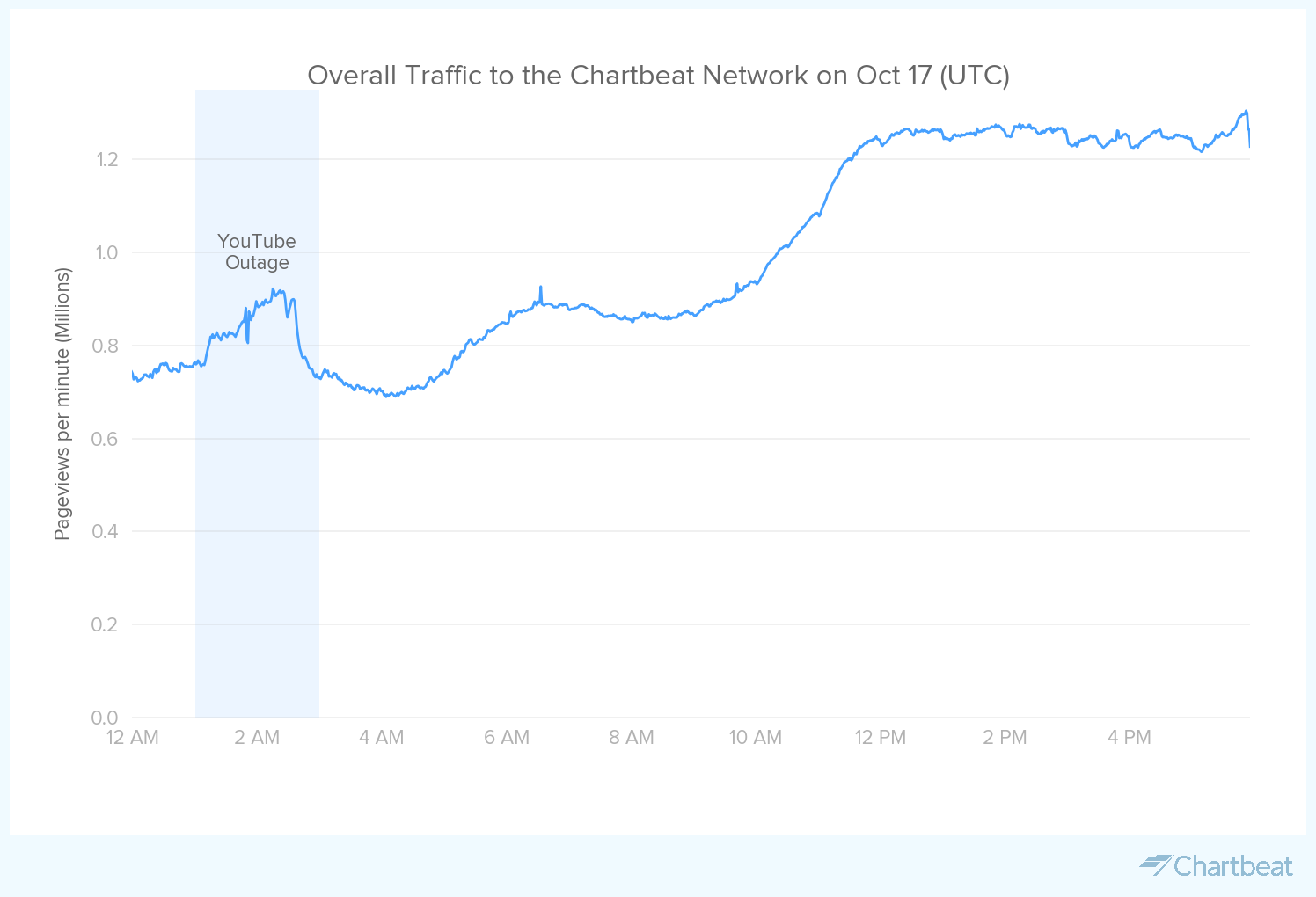What do people do when YouTube is down? Apparently, they go read articles — especially articles about why YouTube is down.
A one-hour YouTube outage on October 16 at around 9 p.m. ET resulted in a 20 percent net increase in traffic to client publishers’ sites, Chartbeat found.

That increase was roughly evenly split between general articles on the publishers’ sites, and articles specifically about the YouTube outage.
The shift in consumption when YouTube was down is notable compared to previous outages on other services. A 45-minute Facebook outage on August 3, for instance, resulted in just a 2.3 percent net increase in traffic to Chartbeat publishers’ sites (and only a negligible amount of that traffic went to articles about the outage). As in the YouTube case, though, readers used the time that Facebook was down to go straight to publishers’ sites: Direct traffic to publishers’ websites increased 11 percent, Chartbeat found, while traffic to publishers’ mobile apps went up by 22 percent.Unlike Facebook, YouTube is not normally a traffic driver to publishers, Chartbeat notes, making the October 16 bump “purely additive.” The YouTube outage also took place on a Tuesday evening in the U.S., which Chartbeat’s data scientist Su Hang refers to as “prime couch time” — and when users chilling on their couches couldn’t pull up YouTube videos, it appears they went to read stuff instead.
For an hour, anyway.
Leave a comment